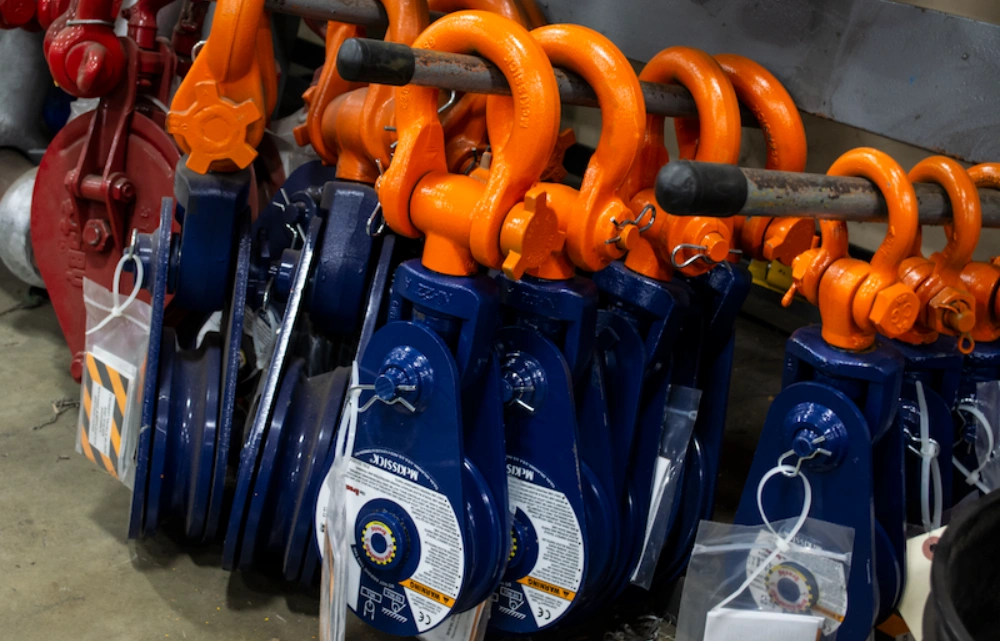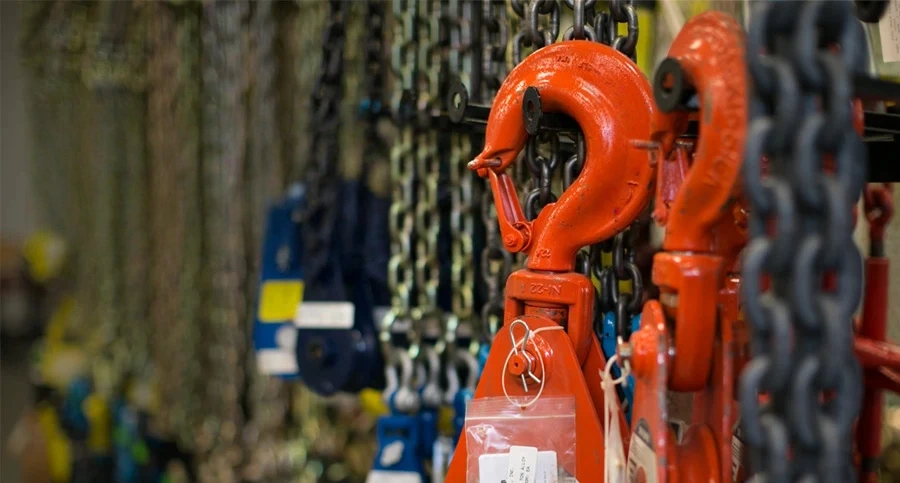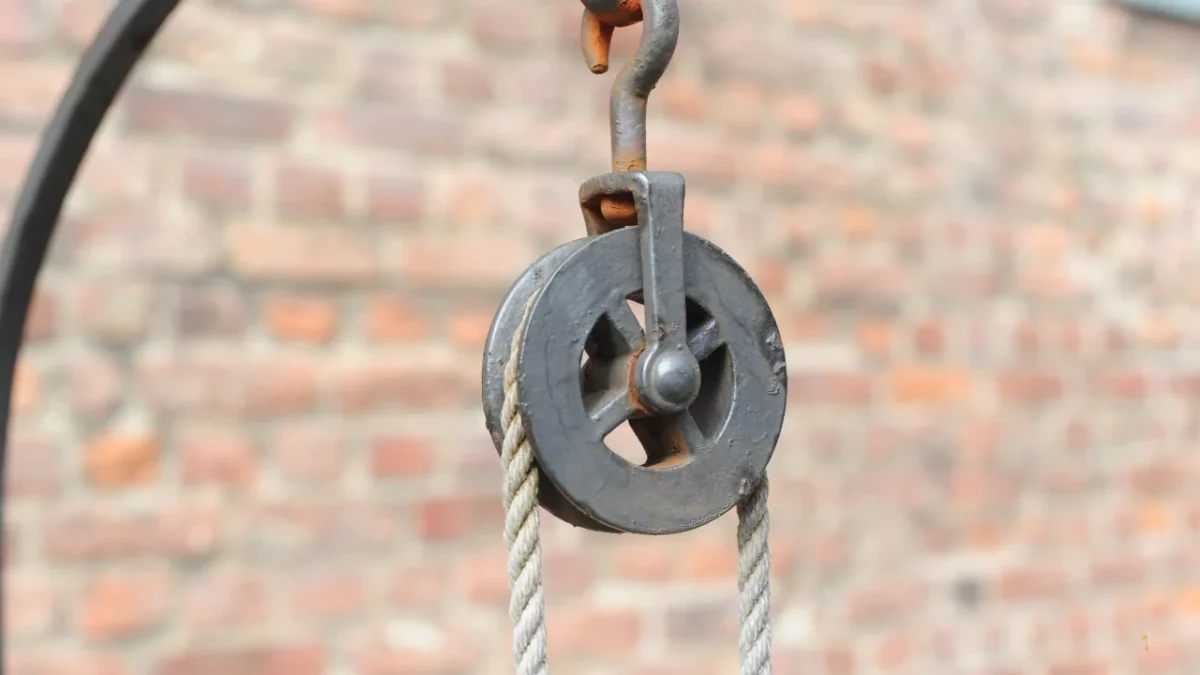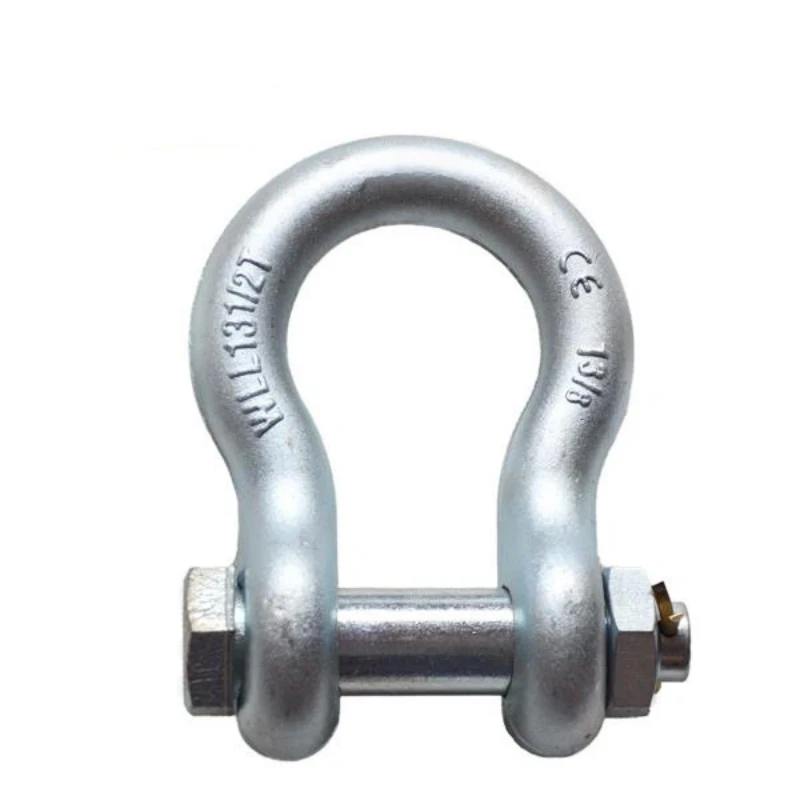Picture yourself on a construction site, needing to lift a heavy load. You must decide between a snatch block and a pulley. The right choice can make your operation safer and more efficient. The snatch block vs pulley decision matters because each tool serves a unique function.
Snatch blocks change load direction and offer better load distribution, reducing strain and improving safety. Using the wrong equipment risks accidents and costly downtime. The table below highlights common rigging failures:
Accident Type | Description |
|---|---|
Improper Rigging | Load instability due to incorrect rigging practices |
Incorrect Slings | Using slings not rated for the load can cause drops |
Human Error | 90% of crane accidents result from mistakes in planning |
Load Stability Challenges | 27% of drops occur from poor rigging |
Selecting certified, high-performance snatch blocks and pulleys from Powerful Machinery helps you avoid these risks and ensures project success.
Key Takeaways
A snatch block allows for quick rope changes and provides a mechanical advantage, making it ideal for heavy lifting and towing tasks.
Use a standard pulley for straightforward lifts and guiding cables along fixed paths, as it simplifies setups for lighter loads.
Always match your lifting equipment to the job requirements to enhance safety and efficiency during operations.
Regularly inspect your lifting tools and ensure they meet safety standards to prevent accidents and ensure reliable performance.
Powerful Machinery offers certified snatch blocks and pulleys designed for demanding environments, ensuring safety and efficiency in your lifting projects.
Snatch Block vs Pulley
Key Differences
When you compare a snatch block vs pulley, you notice several important differences in their design and how you use them on the job. Both tools help you lift and move heavy loads, but they serve different purposes in rigging and lifting operations. The table below highlights the main distinctions:
Feature | Snatch Block | Standard Pulley |
|---|---|---|
Design | Opens with a gate for easy threading of wire rope | Always closed, requires threading through the axle |
Operation | Allows for quick reeving of the wire rope | Requires reeving the wire rope through the opening |
Applications | Used in various lifting operations, including recovery and towing | Used for direction and weight lifting in hoists and winches |
A snatch block features a side plate that opens, so you can insert the rope without unthreading the entire line. This design saves you time, especially when you need to change the direction of a load quickly. In contrast, a standard pulley has a fixed side plate. You must thread the rope through the axle, which can slow down your setup.
Another key difference in the snatch block vs pulley comparison is how each tool handles force. A snatch block often forms part of a block and tackle system. This setup increases the tension force in the rope, making it easier for you to lift heavy loads.
The mechanical advantage you gain depends on the number of rope sections supporting the load. With more sections, you can lift heavier objects with less effort. Standard pulleys, while useful for changing direction, do not always provide the same level of mechanical advantage as a snatch block system.
Powerful Machinery offers both snatch blocks and pulleys designed for demanding environments. Their products meet strict industry standards, so you can trust them for safety and performance in your lifting projects.
When to Use Each?
You face the snatch block vs pulley decision every time you plan a lifting or rigging task. Knowing when to use each tool helps you work more efficiently and safely.
Choose a snatch block when you need to:
Change the direction of a heavy load during lifting or towing.
Set up a block and tackle system for greater mechanical advantage.
Insert or remove the rope quickly without unthreading the entire line.
Handle demanding jobs in construction, marine, or rescue operations.
Use a standard pulley when you want to:
Guide a rope or cable along a fixed path.
Lift or lower loads in a straight line, such as with a hoist or winch.
Maintain a simple setup for lighter loads or less complex rigging.
A block and tackle system with a snatch block can give you a mechanical advantage of up to 6, depending on the number of rope sections. This means you can lift a heavy load with less force, but you will need to pull more rope to move the load a certain distance.
Standard pulleys help you redirect force, but they do not multiply your lifting power in the same way.
Tip: Always match your equipment to the job. For complex lifts or when you need to change direction under load, a snatch block is your best choice. For straightforward lifts or guiding cables, a pulley works well.
When you select snatch blocks and pulleys from Powerful Machinery, you get certified, high-performance tools that support your safety and efficiency goals. Their products help you handle any lifting challenge with confidence.
Snatch Block Overview

What Is a Snatch Block?
A snatch block is a heavy-duty pulley designed for lifting and rigging tasks. You can open its side plate, which lets you insert a cable or rope without threading it through the entire system. The main part of a snatch block is the sheave, a grooved wheel that rotates around a central axle.
This design reduces friction and helps distribute load forces evenly. You often use a snatch block to manage dynamic loads and redirect lines under high tension. In construction, marine, and rescue operations, this tool is essential for safe and efficient lifting.
Function/Component | Description |
|---|---|
Change Direction of Wire Rope | Lets you change the direction of the wire rope during lifting or pulling. |
Modify the Amount of Force | Adjusts the force applied, making heavy lifts easier. |
Increase Efficiency | Enhances lifting results and reduces effort. |
Components of the Block | Includes a sheave, holder, and connection points like hooks or shackles. |
Sheave Design | The grooved wheel supports and guides the rope. |
Applications | Used in construction, oil fields, and vehicle recovery. |
How Does a Snatch Block Work?

You use a snatch block to gain a mechanical advantage during lifting or pulling. When you run a line from a winch through the snatch block and back, you can pull heavier loads with less effort.
This setup can double or even triple the number of load lines, which reduces stress on each line. The snatch block increases your lifting and pulling capacity, providing stability and balancing the force needed for tough jobs.
You achieve a greater pulling force by running the line through the snatch block.
The device allows you to double or triple load lines, making heavy lifts safer.
It helps balance and stabilize loads, reducing the risk of accidents.
Powerful Machinery Snatch Block Features
Powerful Machinery offers a range of snatch blocks designed for demanding environments. Their snatch blocks feature a side-opening design, so you can insert the rope quickly without unthreading the entire line.
Models with hooks allow for fast attachment and field adjustments, which is ideal for towing and rescue. Snatch blocks with shackles provide a secure connection for high-load lifting and pulling. Tail board snatch blocks let you make quick rigging changes without removing fittings.
Feature | Benefit |
|---|---|
Side-opening design | Quick rope insertion and removal |
Snatch blocks with hooks | Fast attachment for field use |
Snatch blocks with shackles | Secure connection for heavy lifting |
Tail board snatch blocks | Easy rigging changes |
You can trust Powerful Machinery snatch blocks for certified reliability and safety. These products meet strict performance standards, ensuring maximum efficiency and low friction in every lift.
Note: Powerful Machinery snatch blocks are certified for demanding jobs, giving you peace of mind during critical lifting operations.
Pulley Basics
What Is a Pulley?

A pulley is a simple machine that helps you lift or move heavy objects with less effort. You see a pulley as a wheel mounted on an axle or shaft. The wheel often has a groove around its edge to guide a rope, cable, or belt.
When you use a pulley, you can change the direction of force and make lifting tasks easier. In lifting and rigging, pulleys play a key role in many industries, including construction, marine, and transportation.
A pulley is a wheel on an axle or shaft.
It allows a taut cable or belt to move and change direction.
The groove around the wheel keeps the cable or belt in place.
Pulleys can transfer power between the wheel and the shaft.
How It Works?
You use a pulley to reduce the physical effort needed to lift a load. When you pull on one end of the rope, the pulley changes the direction of your force. This means you can lift a heavy object without pulling it straight up. Pulleys also help you guide cables and support loads in different positions.
You mount the pulley on an axle.
You run a rope or cable over the wheel.
The pulley redirects the force, making lifting easier.
You can use multiple pulleys together to create a pulley block, which increases your lifting power.
Tip: Using a pulley block system lets you lift heavier loads with less effort, making your work safer and more efficient.
Powerful Machinery Pulley & Blocks
Powerful Machinery offers a full range of pulley block solutions for demanding lifting tasks. You can choose from single or double sheave blocks, snatch blocks, and marine cargo blocks.
Each pulley block is made from high-quality materials like cast iron and steel, ensuring durability and long service life. These products help you reduce friction, distribute loads evenly, and control heavy objects safely.
Feature/Advantage | Description |
|---|---|
Increased Mechanical Advantage | You use less force to lift heavy loads, ideal for construction and rigging. |
Enhanced Efficiency | The pulley block provides smooth motion and reduces wear and tear. |
Versatility in Application | You can use these blocks in construction, marine, and automotive settings. |
Safety and Load Control | Better control over loads reduces accident risks and improves stability. |
Cost-Effective Solutions | Pulley blocks offer reliable performance at an affordable price. |
When you select a pulley block from Powerful Machinery, you get a tool that meets strict safety standards and adapts to many lifting needs. These products help you complete your projects efficiently and safely.
Comparison
Design Differences
You notice clear design differences when you compare a snatch block and a pulley. A snatch block features a side-opening plate. This lets you insert or remove the rope quickly, even when the line is already rigged.
You do not need to unthread the entire system. In contrast, a pulley has a fixed side plate. You must thread the rope through the axle, which can take more time during setup.
Feature | Snatch Block | Pulley |
|---|---|---|
Side Plate | Opens for easy rope insertion | Fixed, the rope must be threaded |
Rope Handling | Quick reeving and removal | Requires full threading |
Attachment | Hooks or shackles for secure mounting | Hooks, eyes, or fixed attachments |
Powerful Machinery offers snatch blocks with hooks or shackles, as well as a full range of pulley blocks for different lifting needs.
Performance
You gain a mechanical advantage with both tools, but the snatch block often provides greater lifting power. Snatch blocks are rated by their safe working load limit (WLL), determined through destructive testing. For example, a snatch block with an 8,000 lbs.
WLL has a breaking strength of about 32,000 lbs. due to a 4:1 safety factor. You can double or triple your lifting capacity by using multiple snatch blocks in a block and tackle system. Pulley blocks also increase lifting capacity, but their main strength lies in guiding and redirecting loads.
Tip: Always inspect your equipment before use and never exceed the rated capacity. Lubricate pulleys as needed for smooth operation.
Use Cases
You choose between a snatch block and a pulley based on your specific applications:
Directional change: Both tools let you change the direction of a line or cable for efficient lifting.
Mechanical advantage: Snatch blocks excel in block and tackle systems, reducing the force you need.
Load sharing: Both distribute load, but snatch blocks handle higher capacities.
Recovery operations: Snatch blocks are essential for off-road vehicle recovery and towing.
Rope protection: Both protect ropes from sharp edges, but snatch blocks offer more versatility in challenging environments.
Versatility: You find snatch blocks and pulleys in construction, marine, and industrial applications.
Powerful Machinery products support all these applications, providing certified solutions for your toughest lifting challenges.
Choosing Tools
Factors to Consider
When you select between a snatch block and a pulley, you must look at several important factors. Each lifting scenario brings unique requirements. You want to match your equipment to the job for the best results. Consider the following:
Understand the differences between block types. Snatch blocks and pulleys serve different roles in lifting operations.
Check the load capacity. Always choose a tool rated for your maximum expected weight.
Decide on the configuration. Single or double sheave options affect how much force you need to apply.
Think about your specific lifting or pulling needs. Some jobs require quick rope changes, while others need stable, fixed setups.
Evaluate environmental conditions. Temperature and humidity can affect the performance and durability of your equipment. Select a pulley or snatch block that can handle your work environment.
Tip: Always review your lifting plan before starting. The right choice improves efficiency and reduces risk.
Safety and Standards
You must prioritize safety in every lifting operation. Regular inspections and compliance with standards protect you and your team. The table below highlights key requirements:
Evidence Type | Details |
|---|---|
Inspection Frequency | Inspect equipment at least every six months. Increase frequency in harsh conditions. |
Safety Standards | Follow all local and international safety regulations. |
Certifications | Look for ISO 9001 and LEEA certifications for quality and safety. |
Snatch block safety depends on using certified products and following inspection schedules. Proof testing of new or repaired slings is mandatory. Keep certificates of proof test for every sling to ensure compliance.
Powerful Machinery Solutions
Powerful Machinery delivers certified products that meet or exceed major international standards, including ASME, ISO, and OSHA. You benefit from lifting chains, snatch blocks, and pulleys that are ready for demanding jobs. Each product undergoes rigorous proof testing before use.
Certificates are maintained for traceability and compliance.
For unique challenges, Powerful Machinery offers custom solutions:
Custom Solutions | Description |
|---|---|
Fabricated Lifting Brackets | Designed for older machines to improve lifting capabilities. |
Reinforcement Frames | Custom-built for extra support with heavy loads. |
Advanced Tools | Use of laser measurement and 3D scanning for precise load mapping. |
You can trust Powerful Machinery to support your lifting operations with reliable products and expert guidance.
Examples
Snatch Block Applications
You often face tough lifting challenges in construction, marine, and rescue operations. Powerful Machinery snatch block products help you handle these situations with confidence. Imagine you work on a construction site where you need to lift steel beams to the upper floors.
You use a snatch block with a hook to change the direction of the wire rope, making it easier to guide the load safely. This setup reduces the strain on your lifting equipment and improves control.
In marine environments, you might need to recover a stranded vessel. You attach a snatch block with a shackle to a secure anchor point. This allows you to redirect the pulling force from your winch, making the recovery process smoother and safer.
Many rescue teams rely on Powerful Machinery snatch blocks for vehicle recovery after accidents. The quick-opening side plate lets you insert the rope fast, saving valuable time during emergencies.
Note: Powerful Machinery snatch blocks are built for reliability. You can trust them to perform under pressure, even in the harshest conditions.
Pulley Applications
You see Powerful Machinery pulley and block systems in action across many industries. These tools help you move heavy loads efficiently and safely. In manufacturing, you use pulleys in conveyor systems to transport raw materials and finished products across the floor.
Construction crews depend on pulley blocks for lifting equipment and materials to high places, ensuring safe and steady movement.
The table below shows how Powerful Machinery pulleys deliver results in demanding environments:
Application Area | Results Achieved |
|---|---|
Conveyor Systems | Efficient transport of raw materials, components, or finished products across manufacturing floors. |
Lifting and Hoisting | Safe lifting of heavy equipment and materials in construction, warehouses, and shipyards. |
Power Transmission | Reliable operation of machinery by transmitting rotational motion between shafts. |
Automated Assembly Lines | Smooth transfer of materials and precise control over heavy loads. |
You benefit from the durability and versatility of these pulley systems. They help you maintain productivity and safety, even when you face tough lifting tasks.
Conclusion
Choosing between a snatch block and a pulley impacts your safety and efficiency on the job. Review the table below to see the main differences:
Feature | Snatch Block | Pulley Block |
|---|---|---|
Weight & Size | Compact, portable | Larger, heavier |
Strength | Great for most lifts | Best for extreme loads |
Maintenance | Minimal | Needs cleaning and oiling |
Compatibility | Synthetic and steel ropes | Steel and synthetic ropes |
Best For | Every day, quick setups | Heavy-duty, long pulls |
You protect your team and boost productivity by selecting the right gear. Reliable equipment reduces downtime, keeps projects on schedule, and supports a safer workplace.
Powerful Machinery delivers certified, high-performance lifting solutions for every industry. For custom needs or expert advice, reach out to their team.
FAQ
What is the main advantage of using a snatch block over a standard pulley?
You gain a mechanical advantage with a snatch block. Its side-opening design lets you insert or remove the rope quickly. This feature saves you time during setup and allows you to change load direction efficiently.
How do I choose the right snatch block or pulley for my project?
You should consider your load weight, rope type, and environment. Always select equipment rated above your maximum load. Powerful Machinery offers certified options for various industries, ensuring you meet safety and performance requirements.
Can I use both synthetic and steel ropes with Powerful Machinery snatch blocks and pulleys?
Yes, you can use both synthetic and steel ropes. Always check the product specifications for compatibility. Powerful Machinery designs its snatch blocks and pulleys to handle a wide range of rope materials safely.
How often should I inspect my lifting equipment?
You should inspect your snatch blocks and pulleys before each use. Schedule thorough inspections at least every six months. Increase inspection frequency if you work in harsh or demanding environments.
Does Powerful Machinery offer custom solutions for unique lifting needs?
You can request custom-engineered solutions from Powerful Machinery. The team collaborates with you to design and manufacture lifting equipment tailored to your specific project requirements.


